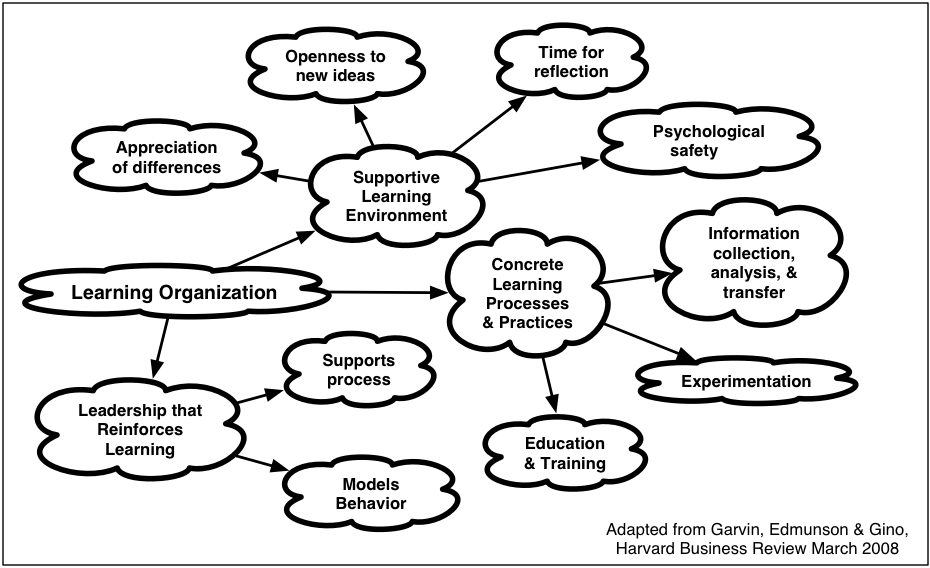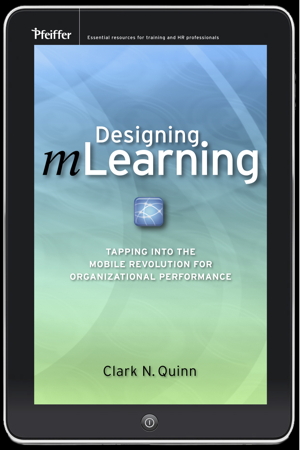Listening to a talk last week led me to ponder the different terms for what it is I lobby for. The goal is to make organizations accomplish their goals, and to continue to be able to do so. In the course of my inquiry, I explored and uncovered several different ‘organizational’ terms. I thought I should lay them out here for my (and your) thoughts.
For one, it seemed to be about organizational effectiveness. That is, the goal is to make organizations not just efficient, but capable of optimal levels of performance. When you look at the Wikipedia definition, you find that they’re about “achieving the outcomes the organization intends to produce”. They do this through alignment, increasing tradeoffs, and facilitating capacity building. The definition also discusses improvements in decision making, learning, group work, and tapping into the strictures of self-organizing and adaptive systems, all of which sound right.
Interesting, most of the discussion seems to focus on not-for-profit organizations. While I agree on their importance, and have done considerable work with such organizations, I guess I’d like to see a broader focus. Also, and this is purely my subjective opinion, the newer thoughts seem grafted on, and the core still seems to be about producing good numbers. Any time you use the phrase ‘human capital’, I am leery.
Organizational engineering is a phrase that popped to mind (similar to learning engineering). Here, Wikipedia defines it as an offshoot of org development, with a focus on information processing. And, coming from cognitive psychology, that sounds good, with a caveat. The reality is, we’re flawed as ideal thinkers. And in the definition it also talks about ‘styles’, which are a problem all on their own. Overall, this appears to be more a proprietary suite of approaches under a label. While it uses nice sounding terms, the reality (again, my inferences here) is that it may be designed for an audience that doesn’t exist.
The final candidate is organizational development. Here the definition touts “implementing effective change”. The field is defined as interdisciplinary and drawing on psych, sociology, and more. In addition to systems thinking and and decision-making, there’s an emphasis on organizational learning and on coaching, so it appears more human-focused. The core values also talk about human beings being valued for themselves, not as resources, and looking at the complex picture. Overall this approach resonates with me more, not just philosophically, but pragmatically.
As I look at what’s emerging from the scientific study of people and organizations, as summed up in a variety of books I’ve touted here, there are some very clear lessons. For, one, people respond when you treat the as meaningful parts of a worthwhile endeavor. When you value people’s input and trust them to apply their talents to the goals, things get done. Caring enough to develop them in ways that are supportive, not punitive, and not just your goals but theirs’ too, retains their interest and commitment. And when you provide them with an environment to succeed and improve, you get the best organizational outcomes.
There’s more about how to get started. Small steps, such as working in a small group (*cough* L&D? *cough* ;), and developing the practices and the infrastructure, then spreading, has been shown to be better than a top-down initiative. Experimenting and reviewing the outcomes, and continually tweaking likewise. Ensuring that it’s coaching, not ‘managing’ (managers are the primary reason people leave companies). Etc.
All this shouldn’t be a surprise, but it’s not trivial to do but takes persistence. And, it flies in the face of much of management and HR practices. I don’t really care what we label it, I just want to find a way to talk about things that makes it easy for people to know what I’m talking about. There are goals to achieve, so my main question is how do we get there? Anyone want to get started?


